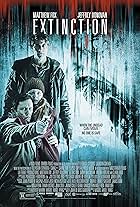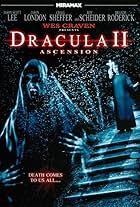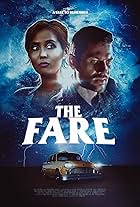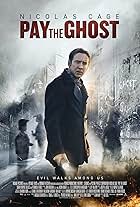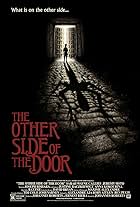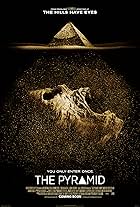IMDb RATING
5.1/10
3.1K
YOUR RATING
A married couple of scientists create a modern-day monster.A married couple of scientists create a modern-day monster.A married couple of scientists create a modern-day monster.
- Awards
- 3 wins
Peter Adrian Sudarso
- Guard 1
- (as Peter Sudarso)
Mckenna Grace
- Molly
- (as McKenna Grace)
- Director
- Writers
- All cast & crew
- Production, box office & more at IMDbPro
Storyline
Did you know
- TriviaClosed captioning on the film gives away the climactic discovery of the monster's, that he has a name.
- GoofsAt the end, Elizabeth is dead. But when Adam carries her, her arm is completely wrapped around his neck as he carries her to the fire. A dead person's arm could not maintain such a position, even if placed there by the carrier; only a live person, using muscles, would be able to keep the arm up like that. Without muscles, it would just hang down behind him. Also, as he carries her, his left arm is supporting her torso and her head is upright. Again, a head maintaining such a position would be impossible for a dead person. A dead person would have no muscles to keep a head up. Instead, it would droop backwards in the direction of gravity. Finally, as he places her down on the burning logs, her head slowly descends, whereas it should fall down, since, again, there are no working muscles to control its descent. All of this is also true if she were merely unconscious.
- ConnectionsReferenced in The Candyman Legacy with Tony Todd (2015)
- SoundtracksMannish Boy
Written by Melvin London, Bo Diddley (as Elias McDaniel) and Muddy Waters (as McKinley Morganfield)
Performed by Tony Todd
Featured review
I skipped this small release (although it does feature recognizable actors Carrie-Anne Moss, Danny Huston and Tony Todd in supporting roles) in my survey of Frankenstein films back in 2018 during the 200th anniversary of Mary Shelley's novel, apparently, as I now know from seeing it, with good reason given that it's largely a retread of the same episodes we've seen in prior cinematic adaptations of the popular story--mainly, the 1931 Universal classic. There's the "It's Alive!" reiteration, the little girl being tossed in a lake, the mob attack and the monster threatening Frankenstein's white-clothed bride in her bedroom--none of which is actually from the book, but rather from the 1931 film. That's not to say these filmmakers didn't read the source, though, as they evidently did from some of the additions here: the blind man, the narrated philosophical musings and a fiery end closer to the original text than to James Whale's pictures.
The most readily apparent distinction of this version is, of course, how grotesque the monster is, but there are also a couple other oddities here--one of which makes me happy I saw the movie. First, the part I'm not keen on is the picture's biblical allusions. Besides the creature being named "Adam," when the Frankensteins go about trying to murder him, they strap him down in a crucifixion pose, although they employ supposedly-more-civilized means to execute him with lethal injection. Little wonder, then, whether this Christ figure will be resurrected. Come to think of it, though, the 1935 sequel "Bride of Frankenstein" also included some Christ allegory with Boris Karloff being tied up by a mob--so this part isn't even that unusual.
Yet, the dreams are something else. My ranking of Frankenstein films is now over 50 entries, and I've never seen one movie that attempted to depict in any way the disturbing and intriguing nightmare from Shelley's story. This one comes closest. In the book, Victor Frankenstein's dream of kissing Elizabeth turns into one of his embracing his dead mother. The dream here, while it plays out seemingly for more bittersweet intent and from the creature's dreaming, still manages to incorporate similar suggestions of incest and necrophilia. The Elizabeth Frankenstein in this movie, after all, is both the mother figure to the creature and the focal point of his romantic and sexual desires. Each time the monster attacks Victor Frankenstein, then, to get to the mother, it becomes an Oedipus complex. That seems more frightening to me than a guy made up to appear covered in boils.
The most readily apparent distinction of this version is, of course, how grotesque the monster is, but there are also a couple other oddities here--one of which makes me happy I saw the movie. First, the part I'm not keen on is the picture's biblical allusions. Besides the creature being named "Adam," when the Frankensteins go about trying to murder him, they strap him down in a crucifixion pose, although they employ supposedly-more-civilized means to execute him with lethal injection. Little wonder, then, whether this Christ figure will be resurrected. Come to think of it, though, the 1935 sequel "Bride of Frankenstein" also included some Christ allegory with Boris Karloff being tied up by a mob--so this part isn't even that unusual.
Yet, the dreams are something else. My ranking of Frankenstein films is now over 50 entries, and I've never seen one movie that attempted to depict in any way the disturbing and intriguing nightmare from Shelley's story. This one comes closest. In the book, Victor Frankenstein's dream of kissing Elizabeth turns into one of his embracing his dead mother. The dream here, while it plays out seemingly for more bittersweet intent and from the creature's dreaming, still manages to incorporate similar suggestions of incest and necrophilia. The Elizabeth Frankenstein in this movie, after all, is both the mother figure to the creature and the focal point of his romantic and sexual desires. Each time the monster attacks Victor Frankenstein, then, to get to the mother, it becomes an Oedipus complex. That seems more frightening to me than a guy made up to appear covered in boils.
- Cineanalyst
- Jun 20, 2020
- Permalink
- How long is Frankenstein?Powered by Alexa
Details
Box office
- Gross worldwide
- $253,514
- Runtime1 hour 29 minutes
- Color
- Aspect ratio
- 1.78 : 1
Contribute to this page
Suggest an edit or add missing content
























